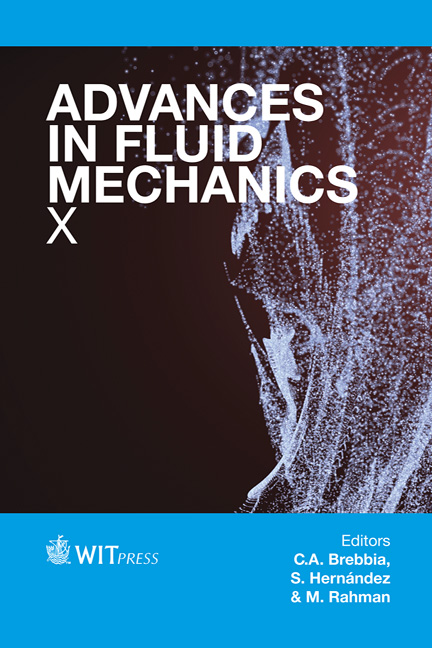Studying The Segré- Silberberg Effect By Velocimetry In Microfluidic Channels
Price
Free (open access)
Transaction
Volume
82
Pages
13
Page Range
265 - 277
Published
2014
Size
1649 kb
Paper DOI
10.2495/AFM140231
Copyright
WIT Press
Author(s)
C. Sommer, S. Quint, P. Spang, T. Walther & M. Baßler
Abstract
The specific equilibrium distance from the channel axis for particles in a laminar flow (Poiseuille Flow) according to the Segré-Silberberg effect has been extensively studied in microfluidic systems and it has been shown that particles of different sizes accumulate at different specific equilibrium distances. Little is known about the corresponding velocities and dynamics of the particle migration. Here, we measure the velocity distributions of particles migrating to their equilibrium positions in micro channels with rectangular cross section (12 μ ∗ 477 μ) at a fixed migration distance (47.5 ) for varying particle diameter (1‐7 μ) and a wide range of Reynolds numbers (0.6–16). The measurements show the transition between two clearly distinct regimes. At low Reynolds numbers, the particle velocities suggest particle trajectories nearly uniformly distributed over the channel height. At high Reynolds numbers, the particles switch to a velocity about one third slower than the maximal velocity of the parabolic flow profile. In this regime, the particles propagate on Segré-Silberberg equilibrium positions between the channel axis and a channel wall. The transition to the Segré-Silberberg regime requires higher Reynolds numbers for smaller particles. We will further discuss the relationship between the various hydrodynamic forces (inertial force and wall force) and the velocity for both regimes in the framework of recent theories. Keywords: inertial migration, Segré-Silberberg effect, tubular pinch effect, micro-particles, velocity distribution, micro-particle velocity.
Keywords
inertial migration, Segré-Silberberg effect, tubular pinch effect,micro-particles, velocity distribution, micro-particle velocity.





